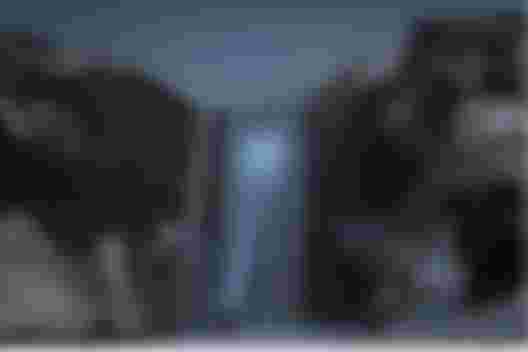Here are some old viking superstitions you might be interested in.

In their quest for riches and conflict, the Vikings came out from Norway, Iceland, Denmark, and Sweden. Their society was a company of strong and enduring men and women who respected bloody gods and appreciated bravery and action above all other virtues.
For two hundred years, the towns and monasteries but often settled and traded on the shores of England, France, and other European countries, requesting honor. Like giants, they traveled throughout history. They exercise courage and prowess through their axial rogues and canny adventurers. The Vikings' golden age was from AD 850-1050 when the ice fled its fjords, men of bronze, free, powerful, and proud, took to the sea. And we at the Viking Lair, the best norse viking store would like to share with you some viking superstitions and beliefs.
Ragnarok
The North myths claimed that the ones who felt victory were destined to take place at Valhalla in the war with the gods of Ragnarok – the last fight at the end of the earth. The gods went down to Hel's Hall. Although the days of dreadful gods and warriors of the sea are gone, some recall the ancient ways and superstitions among their Scandinavian descendants. They are still alive. As the Havamal says, 'Cattle die, parents die, and glory is eternal,' as the Viking Wisdom's Book says.
Yule festivals
Up in northern Scotland in Shetland island sits a small town of Lerwick where they celebrate the biggest and oldest fire festivals in Europe. Up Helly Aa has been celebrated in the town for over 100 years as the culmination of the old Yule season. Celebrations include copious amounts of Norsk brandy, music, and merriment. Moreover, it is a celebration of Shetland heritage and a good demonstration of the expertise and spirit of the islanders rather than simply a fog of the sub-Arctic.
This Lerwick festival originated from the old Yule custom of tar barreling, where squads of young men pulled barrels of burning tar across town on sleds to generate disgust. Although the Viking theme was only recently introduced back in the 1880s, there are indications that it is a very ancient practice that goes back almost 1000 years when fearsome warriors from the icy north invaded the islands. While Up Helly Aa is at heart to celebrate the Viking rituals the trappings of the Norse mythology are still much darker and today are still alive.

Sorcery
The term spae-craft is generally referred to in the Norse saga as black or aggressive sorcery. While it's almost always dark, that's not always the case. Since then, the hedge-witch is the generic word and many of them, often called spae-wives, are song and saga as optimistic characters. There are ways to protect against space wives that involve special engravings on authentic viking bracelets. These special authentic viking bracelets were taken as inspiration for most of our items in our norse viking store.
On the other hand, Seither was also feared for being a great black sorcerer, and a host of nasty monsters were meant to be intimately connected with trolls. Seithir was a spell incantation that was primarily female in ancient times, and other items may be referred to as galdrar or galðrar. In the Viking age, Seithir had connotations of manliness or 'effeminacy' because the manipulation was contradictory to the (then) men's standard of clear, open behavior. There have been many forms of the black magic of spae staff.
The sort of curses that could cause crop failure, cattle disease, illnesses, and plague could be subtle. In the sagas, the best Seither has had immense magic, and many are the heroes laid down by the machinations of poor spell jobs. A real magician may transform his skin, drag trolls up, call them out of the woods or mountains, call out the unscathed dead, speak with bad spirits, embarrass people's minds, or work several other discomforts. Vikings would put special charms on their authentic viking bracelets to protect themselves from Seither magic. Check them out in our norse viking store.
Runes
For the Vikings, the writing was mystical—in truth, the very act of creating the experience that can be utilized later. Ancient vikings believed that one could learn about the past and the future through the written word. The well-educated person can read and understand with the power of writing what the ignorant can't – what could be more magical? Therefore, rather than merely letters to the Vikings is Runes, representations of Norse. This is why runes were carved into every authentic viking bracelets and artifacts.
Runes held hidden magical powers that could be used as portents. While runes could be a sound, written runes held more power within them. One drawn a link between the rune and the marked object by making runs, which implied that its strength was connected with the subject. Therefore, it gave a magical character to a trinket horn or spear. But carving rushes on a drinking horn could invest real strength in it.
Of course, because the Norsemen existed in a sacrificial and painful culture, races were no exception. The discovery of runes and their influence was not an easy learning process but a tribulation ordeal. God Odin himself did not learn about runes until, legend claims, he sat down with his own spear on the tree for nine days, eventually glimpsed into the sacrificial agony. The runes came to men with dreams, murmuring with divine knowledge or harsh learning. Every man could scratch some runes on his table, put on a knife, and leave a name or a scrawl; the real strength of the runes, the inner emotions of force and rune are the province of the few who are learned, who lose their lives and good health.
Death

In Norse mythology, stories, ghosts, and even the dead were prominent. A Draugr, also known as "aptrgangr", is an unskilled being thought to dwell in the deceased's graves. It's a literal "again-walker" or "one who follows his death." The Draug held his treasure jealously even after death, as the graves of important men also contained many items of wealth. Draugs have been said to have superhuman power and to be able to expand their size at the will.
They were Vikings who remained undead and who loved the pain that they caused. The nobler ghosts became known as Einherjar in strong contrast to Draugs. These were the heroes of Norse legend, whom Odin's maids, the Valkyries, picked from their fighting grounds, took to Valhalla to prepare the final war at the capture of the gods.
Viking legends have described Vargr, who was often believed to be bloodthirsty overseers, demonic wolves, or wolves. The world is usually used to refer to Fenrir and his children, Sköll and Hati who were chained at the end of time. According to norse prophecy, should these wolves break from their bondage it would spell the end of the world or as they would call it, Ragnarok In their day, much of Christendom shook at their approach by terrified Vikings and their blood-stricken stories. While the Vikings may now be traditionally consigned, the legends that they created have survived their society for centuries and may prove to be 'eternal.'
These are just common superstitions that the Vikings believed in and practiced during their time. Although most of these beliefs have already faded in time those that wanted to live the viking way have not. These superstitions give us a glimpse into the minds of Vikings and it helps us further understand the meaning behind certain designs and charms in their trinkets and viking bracelets. If you want to feel like a viking then check out the world’s leading viking store, the Viking lair, we have jewelry and items fit for a Viking.



Ragnarok is my favourite because it was in the THOR:RAGNAROK movie i liked that thingy.